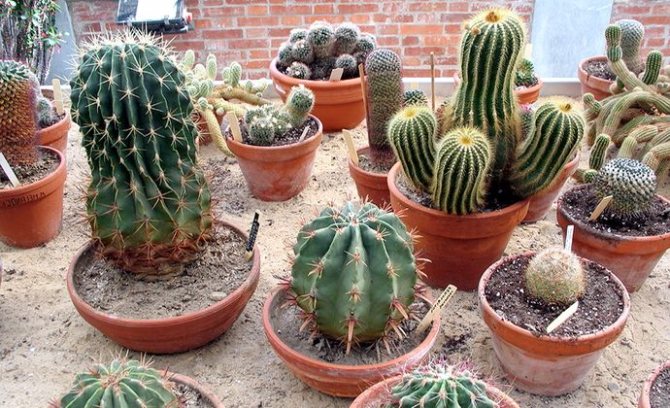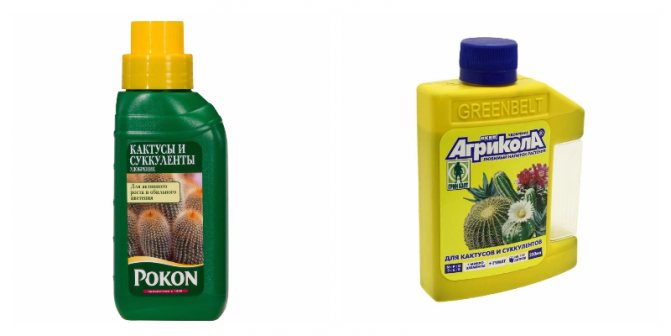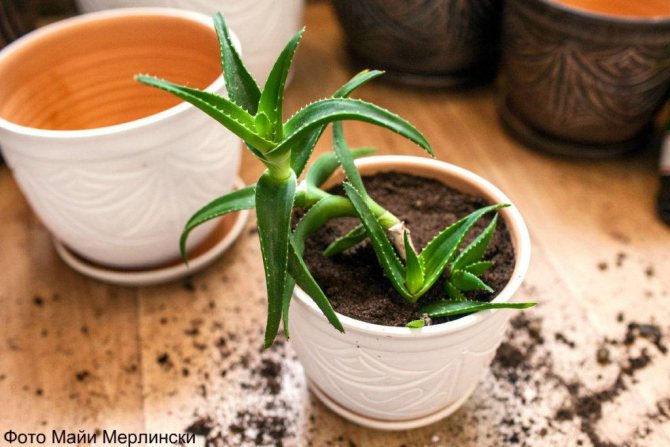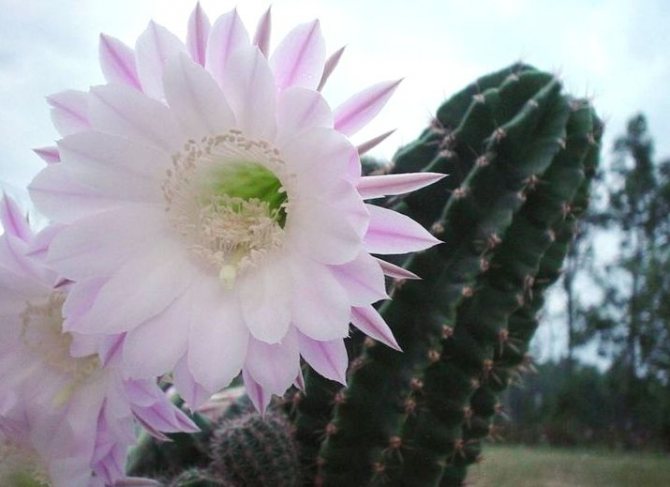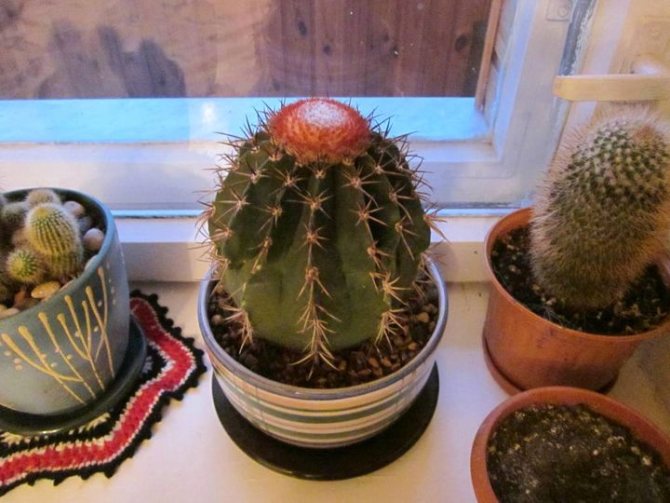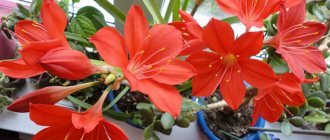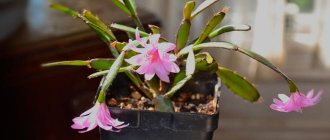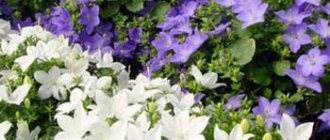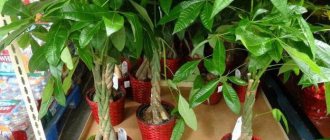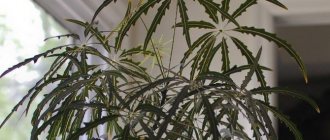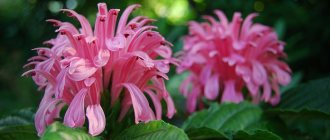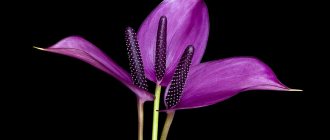Review of the best cactus varieties to grow
Selection of a container for a plant
How to properly prepare the ground at home?
Planting room culture rules
What kind of care do cacti need?
Cacti always have a place in the room. Residents of the northern regions, where these amazing plants cannot survive on the streets and in gardens, are attracted by their unusual appearance and decorativeness. Admiring cacti, you involuntarily feel yourself in a hot desert or prairie. It is believed that there is no need for special care for the plants. But this is a hoax: to grow cacti, you need to have knowledge of indoor crop agrotechnics.
For indoor plants, the selection of soil is important. Each species will need its own components of the soil substrate, their proportions will vary depending on the structure of the root system. You can, of course, purchase the soil in the store, but will it meet the requirements. The mixtures are not always formulated correctly. Therefore, it is better to choose the composition yourself that will allow the cacti to fully develop.
When to start a transplant
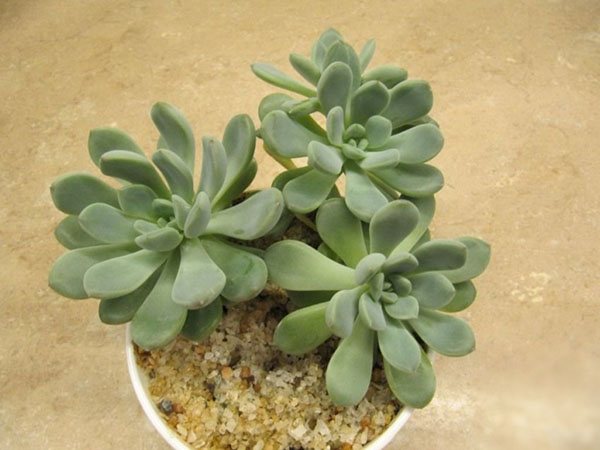
Succulents grow slowly, and the issue of transplanting into a new flower pot may not bother a grower for a couple of years. In addition to the desire to change the flower pot for a container of a different design or color, there are also objective signs when transplanting cannot be delayed.
These factors include the following:
- during irrigation, water stagnates on the soil surface, and does not penetrate down;
- the roots are cramped in the flower pot, they are even visible from the drainage holes;
- the size of the pot is too small for the plant;
- the soil mixture is in poor condition - depleted, spoiled.
Even if there are no objective reasons, the plant should be transplanted every two years. The optimal time for replanting is early spring.
Transplanting succulents after purchase is a mandatory hygienic procedure. It is especially important to carry out it with a questionable source of plant acquisition.
Coconut substrate for indoor plants
In addition to ready-made earthen mixtures, you can find many other compositions and natural ingredients on sale that are actively used by flower growers. Coconut substrate is in great demand. It is a natural and ecological product, which is often substituted for an earthen mixture with peat.
This material is made by processing the skin of coconuts. The finished product is a mixture of coconut fiber and dust. Due to its special properties, it is suitable for growing various domestic plants. On sale, the substrate is found in two forms:
It is optimal for growing vegetables and indoor plants, both green and flowering. For succulents, nut substrate is great as an addition to the main earthy composition, but some successfully use it as a soil mixture.
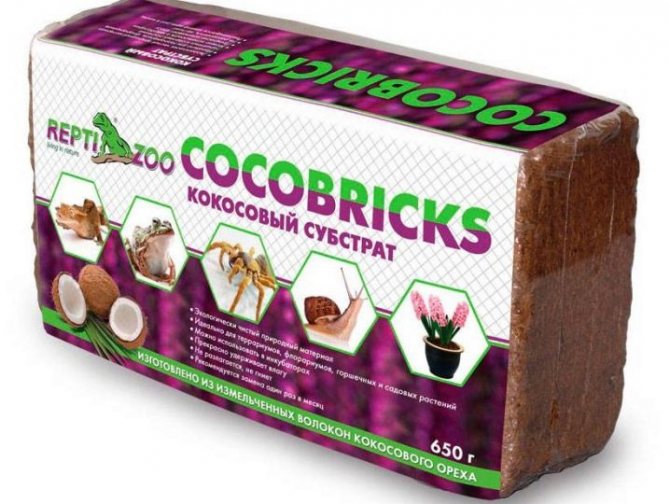

How to transplant succulents
How to transplant succulents correctly? This must be done in stages and slowly.
Stage 1. Preparatory
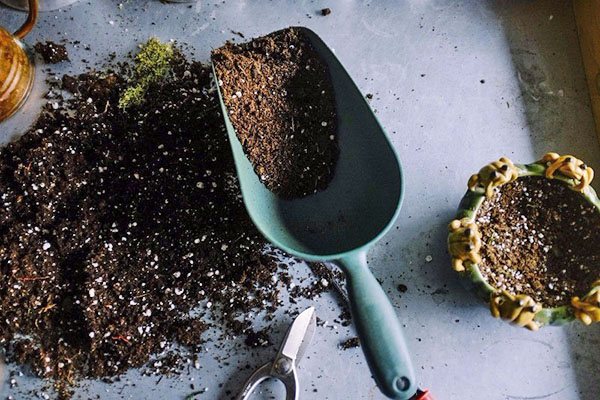

During the preparation phase, which begins a few days before transplanting, the plant is not watered. This is necessary so that the roots can be easily removed: the dry soil mixture will simply crumble from them.Also, no additional manipulations are performed with the succulent.
During this time they prepare:
- a new container for a flower (usually they choose a little more than the previous one, so that the roots are free enough in it);
- soil mixture;
- drainage.
The new pot should not be oversized for the succulent.
Stage 2. Extracting a plant
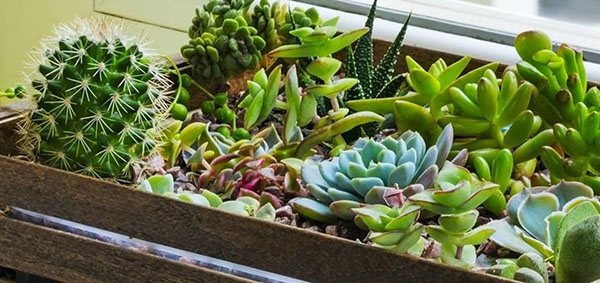

Removing the plant from the flower pot should be done carefully, without the use of force. In the case of a purchased sample, when the succulent was grown in peat, the roots must be carefully cleaned of the substrate and dried for a couple of days.
If the root system is tightly entwined with an earthen ball, you will have to use a thin wooden stick to free the roots. Removing the old soil will help the succulent grow and develop better after transplanting. If there are damaged or dried roots, it is best to prune them.
How to transplant a succulent plant in cases where it is difficult to remove it from the pot? It is permissible to turn the container over and knock on it a little. In difficult cases, when the root system cannot be easily removed, you can even go to the destruction of the pot itself.
In situations where a lot of roots were damaged during the extraction of the plant, planting should be postponed. The succulent itself is placed in a warm, dark place for a couple of days to allow the lesions to dry out.
Succulents have fragile roots, so you need to act very carefully.
Stage 3. Landing
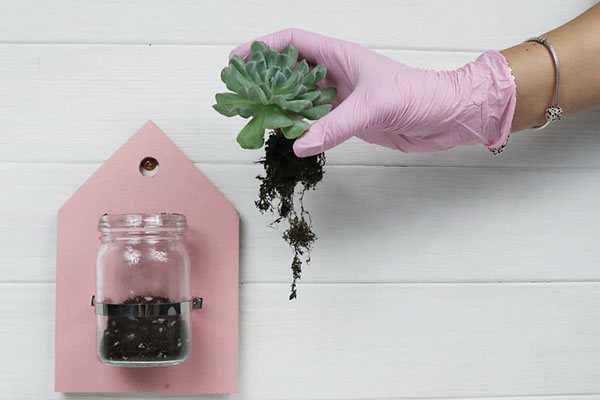

Landing must be carried out as follows:
- Drainage (expanded clay, broken brick) is poured into the prepared container.
- A little prepared soil mixture is poured on top.
- The plant itself is planted. The roots are straightened.
- Free space is covered with earth. It should be poured evenly over the entire area evenly, so as not to break the symmetry.
- Around the plant, the soil should be slightly (not too zealous) compacted so that the succulent is fixed. At the same time, the plant should not be allowed to be excessively buried.
- Pebbles or expanded clay can be poured onto the ground on top. This is optional, but highly desirable for succulents.
A prerequisite for successful transplanting of a succulent is that in a new container, all the tips of the roots should be directed downward and to the sides, and even more so, they should not be bent up.
Work on bugs
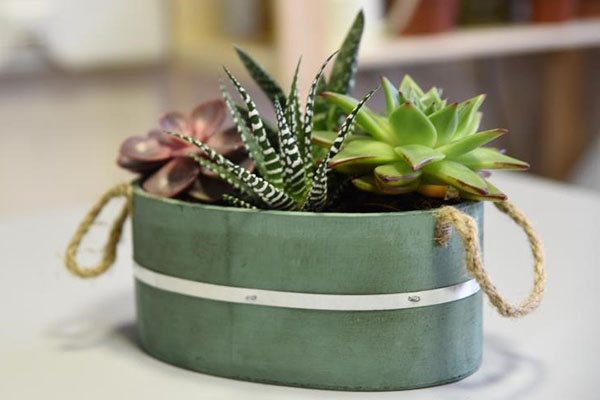

When the plant has already been planted, but the ground has not yet been watered, some planting errors can be corrected.
Problem
Problems
DIY soil for succulents
If you know the composition and characteristics of home flowers, then you can add the necessary components to the store soil. But, professionals prefer to cook the substrate with their own hands. The most common method for preparing a mixture is a composition of sheet, turfy soil and sand, all components must be taken in equal proportions.
For flowers with a small root system, light and loose soil is needed, therefore, already in the prepared substrate, it is necessary to add broken brick or fine pebbles. Thus, a mixture is obtained, consisting of the following components:
- sod and leafy soil - 1;
- sand - 1;
- broken brick or pebbles (0.5).
Brick chips can be replaced with perlite or vermiculite.
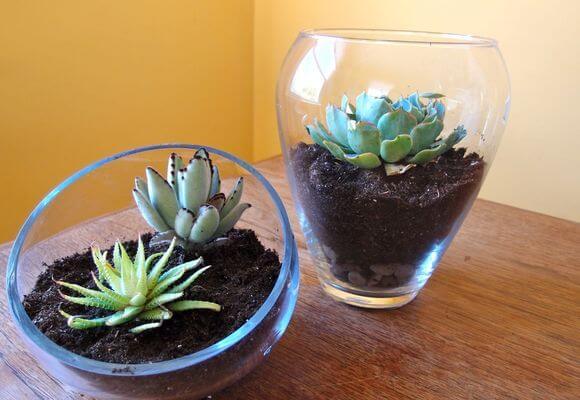

Succulents with a strong and thick root system can store water. For such flowers, a small amount of loam is added to the composition of the earth, which is represented by sod soil. Then the proportion of the substrate will change as follows:
- Sheet soil - 1.
- Sod land - 1.5.
- Sand - 1.
Also, for flowers that naturally grew on stony ground, flower growers are advised to add crushed stone. In almost every substrate for succulents, you need to add a little crushed charcoal.
Features of watering when replanting
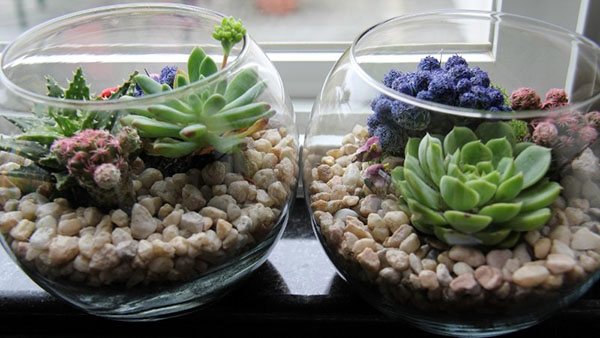

When can succulents be watered after transplanting? Only a week later.A transplanted flower needs time to get used to new conditions.
In the process of placing it in a new container, the roots of the plant are injured. At the same time, it is important that there is no contact with wet soil, since the soil can serve as a source of infection.
If the plant, for some reason, was not transplanted, but was transferred into a new container along with a lump of earth, then watering can be carried out immediately.
The transplanting process should be carried out from dry ground to dry.
The problem of how to transplant succulents is solved quite simply if time is allocated for the preparation and for the transplant itself, and all conditions are met. The health of the plant and its attractiveness will depend on the correctness and thoroughness of the actions in the future.
What is the best soil for cacti?
Specialized stores will offer substrate for cacti and succulents. But it is not suitable for all types of plants. The finished mixture is based on peat. This component is not always useful for cacti that came to us from deserts or mountains. After all, there cacti grow on dry ground, stones, in sand and clay. And nutritious peat can destroy cacti, since microflora undesirable for cacti develops in it.
The ideal environment for desert dwellers would be one that mimics grainy, dry soil, lacking nutrients. Harsh soils, minimum rainfall - this is normal for cacti. They manage to develop, bloom in such conditions. Therefore, the soil must be selected taking into account the needs of indoor crops.
Succulent transplant specialist recommendations - video
"Plants, which are included in the group, united by the term" succulents ", are not related to each other by a common origin, their similarities are caused by similar habitats." (c) Source: Wikipedia.
Succulents naturally grow in arid regions and are more tolerant to temperature fluctuations and lighting, however, in order to provide the plant with proper care at home, you need to learn more about how to grow succulents. Read more about popular home species with descriptions and photos.
Review of the best cactus varieties to grow
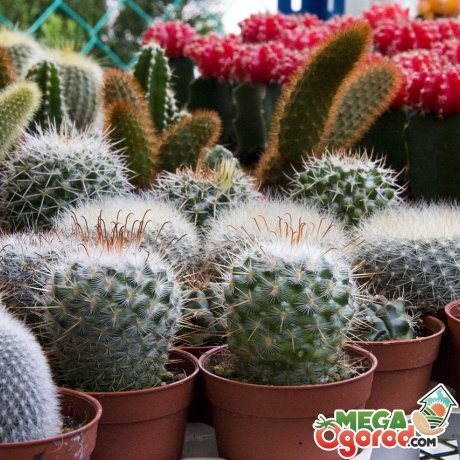

Cacti belong to the Carnation family. They are able to grow in deserts, places where precipitation rarely falls. Their succulent, fleshy leaves store moisture, just like succulents do. The arid regions of South America and the West Indies are considered the birthplace of wonderful plants. But the best types of cacti have spread all over the world and they successfully inhabit the windowsills of apartments.
Among them stand out:
- Mammillaria. As soon as the plant is not called: a snowball, and ladies' fingers, and a gold star. These spherical or columnar cacti are small in size. The growth of the fleshy stem reaches 20 centimeters. A feature of the species are bundles of thorns that protrude from closely spaced tubercles. From an early age, mammillaria begins to bloom, becoming covered with flowers of various colors.
- Cereus is a columnar cactus. This long-liver is capable of reaching a height of up to a meter or two, and in nature - up to 6-8 meters. On the straight, like a candle, the stems have thorns. And during the growing season, white or red buds are formed.
- Prickly pear. The flat-oval fleshy stems are divided into segments.The bluish-green color of the cactus is interesting. The prickly pear spines are modified, and the short hairs bring trouble to those who touch the stems. They pierce the skin and are difficult to get rid of. From spring to autumn, the plant blooms.
- Phyllocactus, or epiphyllum. These are leafy types of cacti, although the flat stems of the plant are called leaves. Decorative flowers at the cactus. They are large, bright colors. There are species with fragrant buds.
From large lobivia cacti. The dimensions of the stem, cylindrical in shape, reach half a meter. On the surface of the stem, areas of light and dark shades of green alternate. The entire stem of the plant is decorated with spines, straight as well as curved. The root is a stem or looks like a turnip. At the root, many children are formed, with which the lobivia multiplies. The funnel-shaped flower petals are located on the side of the stem. An adult plant opens up to 25 brightly colored buds. Another name for the cactus is echinopsis.
How to transplant a succulent plant (with photos)
Choosing a pot and soil
Have you bought a new plant from the store, or are you wondering how to transplant your home succulent? Let's take a closer look at all the subtleties and landing rules. So that cultivation brings you only joy!
- You should start by choosing a pot. Choose the right pot size, it should be a couple of centimeters wider than your plant. For small fleshy individuals, for example, such as Echeveria, Molodilo, Graptoveria, Pachyveria, Sedum, low clay or ceramic pots and pots are suitable. Examples of pots and decoration. For all succulents, wide and low pots are usually used, but for large individuals with a developed root system, a regular pot with a drainage system is suitable.
Selection of a container for a plant
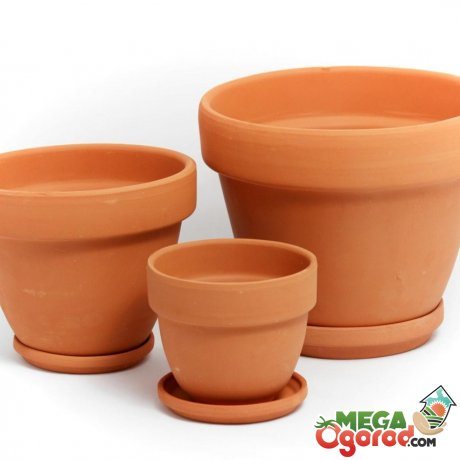

It is necessary to decide on the size of the cactus pot in advance. The root system in plant species differs in shape and length. Mammillaria has many children on the sides, so the volume of the pot should be 10 centimeters.
Branched roots in some species require a wide but low capacity. Lobivia has a long root, and a deep pot is selected for it. The material from which the cactus container is made does not play a special role. Both ordinary plastic and ceramic are suitable.
Do not plant a plant in a metal container.
Different containers are produced in shape. They are all good for cactus. You can round, and preferably rectangular or square pots or tubs, if the plant has reached a large size. A good owner always closely monitors the condition of his "prickly friend", in time transplanting from a container that is small for him into a more spacious one.
Possible growing problems and disease
Succulents rarely suffer from external pests, but it happens that thrips or nematodes are introduced into the roots of plants (this will happen if the soil and filler were taken from the site and not processed properly). In this case, you will have to propagate the plant with the tip (read about the reproduction of succulents in this article), or make a transplant with complete cleansing of the roots from the old soil and treating them with disinfectant solutions.
Most often, inexperienced succulent lovers are faced with such a problem as plant decay, which can quickly destroy the plant. To prevent rot, it is recommended to follow the watering regime, and add charcoal to the soil when replanting.
- Brown specks on leaves and shoots - this may mean that the Botrytis fungus has grown in the plant, which can cause leaf rot. What to do: cut off the affected leaves, reduce watering of the plant (leave the soil dry for a couple of days), and treat the plant with a special fungicide solution, for example, "Maxim".
- Brown specks with an unpleasant odor - This is the Ervinia bacterium that has started in your plant. What to do: remove damaged parts of the plant, reduce watering, treat with potassium permanganate solution.
In order to prevent rot, you need to water the succulent less often and periodically examine the leaves for rot.
- The plant appeared unhealthy bloom of a red or green tint, cloudy dew, or white spots - spores of fungi such as aspergillosis or penigillosis. What to do: treat the affected leaves with an alkaline solution (for example, soda) or a solution of potassium permanganate.
- The plant quickly died, there were no external signs of the disease - most likely, the root system was infected with nematoses. What to do : if healthy leaves remain on the plant, they can be multiplied and the dead plant thrown away with the ground. Disinfect the pot well. At the next planting of the succulent, add charcoal to the soil, observe the watering regime.
- Leaf burns - it is likely that you left the plant in the open sun, after hibernation, or after shopping at the store. What to do: gradually accustom the plant to bright sunlight.
Soil for succulents: composition and proportions of components
Succulents grow slowly. Some give an increase of only 1 centimeter per year, or even less. Their roots are small and require a special soil composition appropriate for the soil in arid regions. The desert land where succulents grow is sand, stones, the absence of nitrogen in the soil and the minimum content of fertile land. The same conditions must be adhered to when making the soil for indoor succulents. The most necessary nuances should be added to these requirements:
- succulents grow well in loose, quickly drying soil;
- the soil must be well aerated and drained;
- the surface of the soil in the pots must remain dry.
Advice. Succulents are content with occasional watering, after which sprinkle the soil in pots with small pebbles, pebbles, granite chips, that is, any material that dries quickly, but does not delay the evaporation of moisture from the soil.
The composition of the soil for succulents must necessarily include:
- The bottom layer is drainage. We use broken brick, stone chips or small river (sea) pebbles. Layer height 1 cm.
- The middle layer is a substrate from a mixture of 1 part of ordinary soil, 2 parts of coarse sand, 1 part of humus. You can add some pebbles to the mixture. Depending on the size of the planting container, pours this layer, stepping back from the edge of the pot by 1-2 cm.
- The top layer is surface drainage. This layer should be made of material that can be easily removed before watering the plant to keep it dry. It can be the same: crumbs from brick or stone, expanded clay or perlite. After watering, the drainage material is returned to its place. Distribute it with a layer thickness of 1-1.5 centimeters.
Helpful care video
The species diversity of succulents, the bizarre shape of the stems and leaves make them attractive to any lover of home plants. Compared to more capricious indoor flowers, succulents seem to be quite unpretentious. Caring for them really does not require a lot of time and effort, if you follow the proven recommendations. In addition to regular maintenance, each succulent needs a transplant. If organized correctly, unnecessary fuss and difficulties can be avoided.
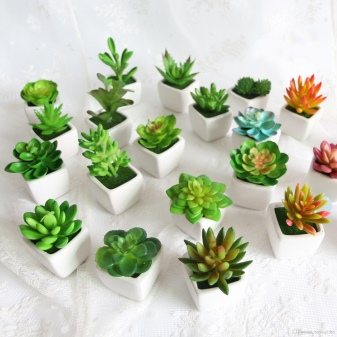

general description
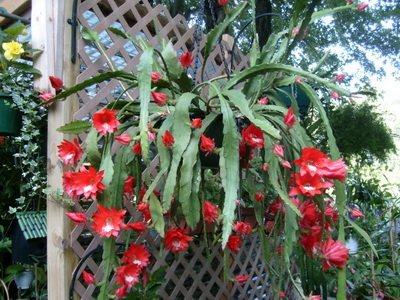

The stems of such a cactus are most often naked, smooth, flat, have a jagged border along the edges, which has taken over the important function of photosynthesis.
Most species have virtually no thorns, and if they did, it was only in the form of plates, similar to scales, on the lateral part of the stem, in thickened places - areoles.
This is where flowers begin to appear. The birthplace of such plants are: South America, more precisely, the tropical forests of Brazil and Ecuador, North America, the island of the West Indies.
INTERESTING! There is a species, the seeds of which were transferred by migratory birds to Africa, Sri Lanka and Madagascar, where they settled in the tropics of these places.
Forest (leafy, tropical) cacti belong to the Cactus family, comes from the Latin word - Cactaceae. The family belongs to the category of cloves, includes perennial stem succulents, which belong to the type of dicotyledonous plants.
Read on our website also about the care of such succulents as: Agave, Adenium, Aloe, Money tree, Kalanchoe, Krestovik, Croton, Lithops, Euphorbia Tirukalli, Pachypodium, Hoya Linearis, Poinsettia, Sansevieria, Hawortia, Eonipium, Echeveria ...
What is a transplant for?
There are several reasons for transplanting succulents.
- Prevention after purchase. When purchasing a plant from your hands or in a store, you can never be sure of the correct planting and the quality of the soil. Therefore, it is better to carry out this procedure yourself.
- Diseases. If any damage is found, the first thing to do is to inspect both the plant itself and its roots. And then start treatment by placing it in a new soil.
- Inconsistency between the size of the plant and the pot. And this applies not only to the roots, but also to the trunk with leaves. In the first case, tightness can cause poor growth. In the second, the aboveground part can simply outweigh the pot.
- Poor soil condition. If the contents of the pot are compressed and are a dense lump through which water cannot seep, it must be replaced. Often, in such a case, a gap forms around the perimeter of the pot.
- Accidents. The pots are rare but fall off. In this case, it is better to carry out the entire transplant procedure again and not try to eliminate only the external traces of a fall. The broken part of the succulent is quite possible to reanimate.
How to use coconut substrate?
Few people know how to properly use this product and plant plants in it. If you have chosen a substrate in the form of briquettes, they must first be soaked. This is done simply: the material is placed in a deep container and filled with warm or hot water. In the process of work, as it is absorbed, the liquid is gradually added.
The substrate will begin to grow in size and disintegrate. From a briquette weighing 1 kilogram, you will get about 6 kilograms of soil, ready for planting. Some experts advise, after swelling, to rinse the product with running water at high temperature. For this, the substrate is enveloped with gauze; nylon products can also be used.
The moistened substrate is sent to a container, at the bottom of which a drain is laid, after which a plant is planted in it. Then the mixture must be fertilized. Formulations with nitrogen content are best suited for this. They also use special complex formulations designed for plants of various varieties.
The peculiarity of the coconut substrate is looseness. The root system in it feels great, develops systematically and receives the necessary oxygen in sufficient quantities.
How to choose the most favorable time
The smaller the succulent, the more often the transplant takes place. Barely ascended seedlings are placed in separate pots. Then this procedure is repeated two or three times until one year of age is reached - as their parameters increase. Someone goes the easy way and puts a small plant in a huge pot, but such savings can lead to negative consequences. Excess liquid will accumulate in the container, which will become an excellent environment for pathogens.
After a year, stem succulents are transplanted no more than once every three years. But for leafy, this period can be shortened. Here you need to focus more on size. If the plant is quite healthy, then as it grows up, the transplant procedure becomes simpler, turning into a transshipment - moving an existing earthen coma to a new container, to which a part of the soil that is missing for complete filling is added.
Succulents can be transplanted throughout the year, with the exception of the budding period. In spring and summer, due to the abundance of heat and light, growth will be more intense. During the rest of the year, growth will be minimal.
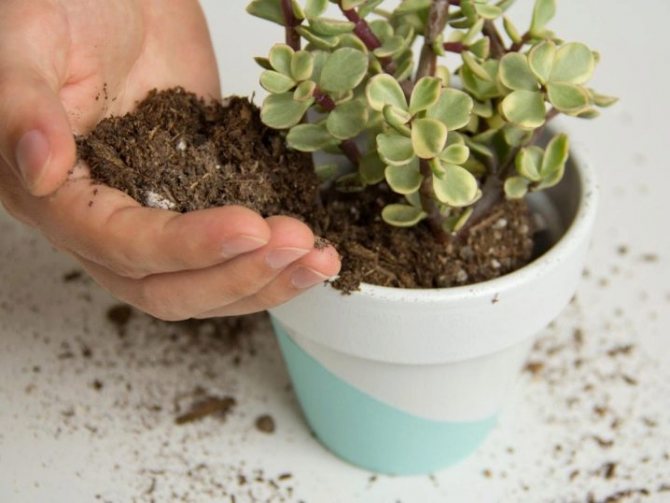

Ideal soil for cactus
The closer it is in composition to the soil to which succulents are accustomed in their natural environment, the better. The land for cacti should be naturally grainy, arid, and poorly nutritious. It is important that it allows air and water to pass through well. As for acidity, for cacti soil this indicator should be pH = 4.5 - 6.
Only in such an environment will these plants feel comfortable, grow at their own slow pace and store moisture. They not only do not need abundant watering and oily soil, like other flowers, but such conditions are destructive for succulents.
And in order to prepare such a soil mixture, one should focus on a number of factors, including the type of plant, its age, climatic conditions, and so on. Typically, mixtures are composed of the following components:
It contains the necessary nutrients, has a suitable friability, lightness, and absorbs moisture well. You can take such land in a birch grove or a park with deciduous trees, after removing the old foliage. It is advisable to do this in the middle of spring. When the snow starts to melt
The material retains moisture, but at the same time, nutrients are retained in it much longer, not being washed out immediately. They take it in the garden, choosing a site densely overgrown with grass. The layer with turf and earth is removed with a shovel, spilled with diluted manure. Then these layers are covered and left to rot for a year.
This method takes time, but if it is not, then you can take the soil, which is shaken off the roots of the dug up sod. It is less nutritious, but still has a suitable structure.
- The old earth from the greenhouse
Not the best option, which is resorted to only if there is no leafy or clay-soddy soil. There is such land in any garden or dacha.
Well-rotted manure is useful for most plants, including indoor ones. However, it is added to the soil of succulents in very small quantities and only if the soil is very poor in nutrients. As a rule, a soil mixture of large specimens belonging to the group of forest cacti is fertilized with humus.
This component, which has large, 2-3 mm fractions, makes the substrate loose and porous. Therefore, he must be added to any soil mixture intended for cacti. You can bring such sand from a beach or river, and before use, rinse it from dust, or use a product from a pet store, where it is sold as material for aquariums.
Required to increase the porosity of the substrate, quickly absorb moisture, ensuring its rapid drying. This non-reactive mineral of natural origin does not float like vermiculite, it is neutral, but tends to accumulate useful substances. Zeolite contains the main essential trace elements.
The easiest way to find this material is in the pet department, as it is used to make cat litter. It should be non-clumping. Zeolite granules are sieved to leave larger, 4-5 mm fractions.
A universal component that is used to disinfect sections and is added to the soil, as it has an anti-rotting effect. Charcoal from deciduous trees works best.
This simple material is very useful for succulents - it makes the soil looser, more porous, and can retain excess water. To make it, it is enough to break a brick or an unnecessary clay bowl.
Instead of brick chips and zeolite, pumice can be added to the mixture - light, porous volcanic rock or perlite, vermiculite, agroperlite. The main functions of these inorganic substances are to pass moisture through the soil and give it airiness.
Most often, florists mix the components in the following proportions:
- 1 part each of leafy land, turf and coarse sand;
- 0.5 parts of drainage material - it can be brick chips, pumice, lava, small expanded clay or other;
- 0.25 parts of peat.
Another modern material suitable for cactus soil is coconut coir. It consists of organic fibers that decompose very slowly. Coira helps to retain moisture and air, gives the mixture the required structure and retains it. It gets wet faster than peat and dries up in a short time.
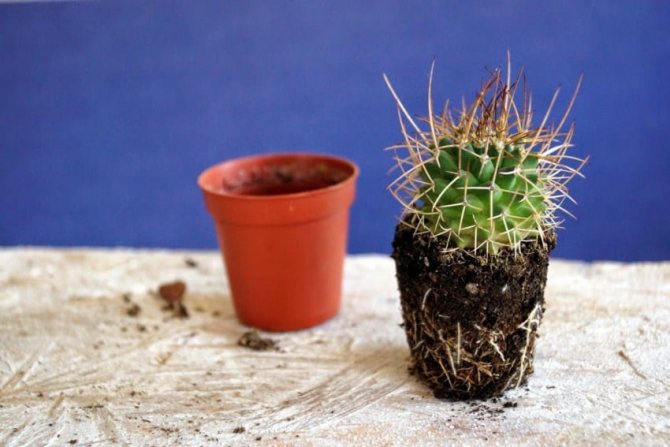

What needs to be prepared
First you need to purchase (or pick up from the existing one) the necessary inventory. Looking for:
- pot;
- narrow scoop or shoulder blade;
- knife or blade;
- potassium permanganate solution.
Of all the above, the most difficult will be the choice of a container for planting.
When choosing the size of the pot, there are several nuances to consider:
- for stem succulents, the transverse size should be two to three centimeters larger;
- for leafy, it is important to correlate the depth and width of the pot with the type of their root system;
- for spreading and tall varieties, resistance is important.
It is equally important for all plants to have through holes for draining excess water. If the pallet spoils the appearance, you can use a planter with a container nested inside. For succulents, plastic, ceramic, or glass pots are often used. Each of them has its own advantages and disadvantages. As a pot, you can use any dish you like or a household container, if it meets the requirements - it is suitable in size and will not retain moisture. Both new and already used containers must be washed and rinsed with boiling water before the planting procedure.
Succulents: features of morphology
To properly prepare the soil for succulents, you need to know their characteristics and morphology. Succulents, even in their appearance, are markedly different from other indoor plants.
- Stem succulents - have thick, ribbed stems. Their small leaves either disappeared completely in the process of evolutionary changes, or turned into thorns and thorns. This subgroup includes most varieties of cacti and milkweed. Moisture collects in the tissues of the bark and core of the stems.
- Leafy succulents - thickened leaves serve as a place for moisture accumulation. Representatives of this subgroup include: different types of aloe, fat woman, havoria, echeveria.
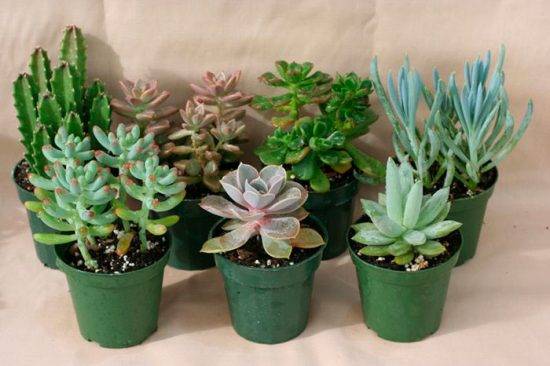

Succulents have an underdeveloped root system - this is the most vulnerable part of the plant. At home, succulents do not experience problems with obtaining moisture, as happens in arid areas of natural habitat. Domesticated succulents do not grow long root suckers that extract water. The roots of home cacti and aloe are very small and fragile, they need special soil to make them feel comfortable sitting in pots and pots.
The pot filling technology has its own characteristics.
- Up to a third of the container can be occupied by the lowest drainage layer - pebbles for the outflow of water. They are disinfected with potassium permanganate and dried well.
- Next comes the soil mix. It is more convenient to use the ready-made one from the store. It is quite difficult to prepare a mixture for succulents on your own, since this word means many varieties. For some of them, the nutritional value of the soil is important, for others it may even be harmful. The easiest option is to mix cleaned turf and nutrient soil. It is better to take it under the leaves, clearing it of grass, debris and roots. To prevent such soil from clumping, sand, peat, charcoal, and small stones are added to it. All components must be disinfected by holding in the oven. The coconut substrate deserves special attention. It can be used neat or mixed with primer in a one-to-one ratio. Such soil will be moderately nutritious, loose, with good air exchange. The pressed substrate is pre-soaked, dried and only then laid as a soil. Otherwise, you can make a mistake in volume.
- Sand or drainage stones can be scattered around the plant on top.
Land for succulents
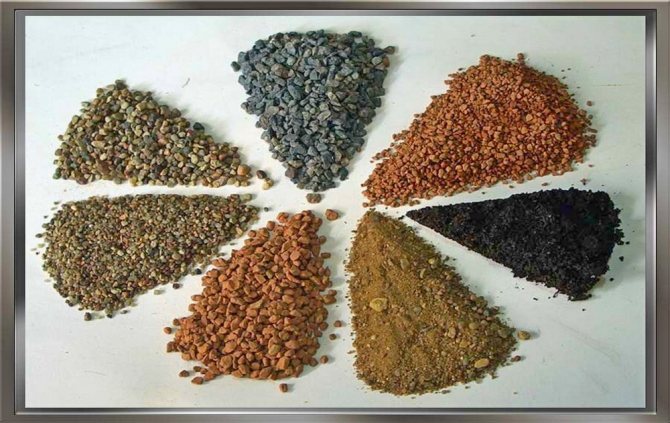

09.02.2018
When three lovers of succulents were faced with the question of "land", it turned out that each of them had his own opinion on this matter, and it was "diametrically opposed to the other two." It is just such an unrealistic phrase that can reflect the diversity of points of view and "own opinions" regarding which particular land to plant succulent plants. Every lover of exotic plants, especially the successful one, has a personal recipe (or recipes) for the soil mixture that guarantees success.
In order not to impose our own preconceived opinions, we will try to give the maximum amount of information about soil mixtures for succulent plants, leaving the reader with the right to decide what to fill the pot with.
This is one of the most difficult problems of cultivating plants in greenhouses, and its solution will require enormous efforts from the amateur. Succulent plants are native to the different climates of all (except Antarctica) continents, and it goes without saying that the soil in which different species grow is not the same. An amateur is faced with the task of meeting the requirements of all succulents to the maximum extent. The success in growing his favorite plants largely depends on how much he succeeds. There are several ways to solve this complex problem. The first is imitation of natural conditions. In philosophical terms, this is the most correct option, but in practice it is the least realistic. If you follow this path relentlessly, then a plant that has grown in one or another point of the globe must be dug up along with a large clod of earth in order to transport it to the collection. At the same time, you should take another bucket or two of soil in reserve, because the migrant will require a transplant. For those who are not limited in their means, such a path may not seem so unrealistic, but for the overwhelming majority it is a fantasy.
Another opportunity to imitate nature is to compose a soil mixture from the available components, however, on the basis of a detailed agrochemical analysis of the soil in the place of growth of this species. In other words, an exact copy of the natural soil is made in terms of chemical and physical composition. With the current development of agrochemistry, this is quite possible, but only here no one conducts soil studies in deposits with a scrupulousness sufficient to make it possible to imitate nature.
The third way is experimentation and observation, when the composition of the soil mixture is determined on the basis of experience, personal or collective. It is more real, and many are going this way. Through trial and error, it turns out what is right for the plant and what should be avoided.
The fourth (and most universal) way is not to imitate nature and not to be led by capricious plants, but to force them to adapt to the land that is available. This is exactly what most succulent lovers do: a single soil mixture is compiled for all plants. Planted in a universal mixture, many succulents develop quite satisfactorily, and only a small part of them can protest against this lack of growth, unhealthy appearance, or even death. An amateur has the right to exclude capricious plants from the collection and no longer make attempts to grow them, but can try to make adjustments to the composition of the universal land just for them. With this approach, 90% of the species develop in the main land mixture, and 10% in a special composition prepared for them, which can be very complex and bizarre.
This method of choosing a soil mixture impresses with the fact that it allows you to easily grow the vast majority of species, have a decent collection with well-developed specimens of representatives of various genera and families, and at the same time have a testing ground where methods of cultivating capricious species are tested. In this case, an amateur has the opportunity to test his strength as a natural scientist and, with a successful experience, surprise his colleagues with his own successes.
If direct or indirect imitation of the natural growing conditions of succulents is almost impossible, then two other approaches based on the ability of plants to adapt to the conditions of existence in the collection are quite real and are actively promoted by both amateurs and specialists.
It is even possible to single out two directions, or two "schools", in approaches to the question of "land".
The first opinion is the most widespread. It is based on knowledge about "classical" gardening: the empirical experience accumulated over centuries has been embodied in the universal rules for the preparation of garden lands and the composition of earth mixtures from them.
The fundamental law of the "classical" approach is as follows: for each plant or group of plants with similar requirements for keeping conditions, a special soil mixture is compiled. The complexity of this approach lies in the fact that the home of a succulent lover or a greenhouse turns into a laboratory, which is more appropriate in an institute of soil science, rather than in a private home.
When compiling land mixtures, it should be borne in mind that the plant will have a very limited amount of root nutrition, which is fraught with a rapid depletion of the supply of nutrients, especially readily soluble ones, in the ground. At the same time, plants grown in greenhouses have increased requirements for the amount of nutrients in the soil compared to those grown in natural conditions. Succulents grown by hobbyists, in the vast majority of cases, develop much faster than in nature. They become a kind of glutton accelerators, consuming huge amounts of food. Therefore, those components that are part of the earthen mixtures must be sufficiently nutritious.
In order to fulfill this requirement, it is necessary to observe the preparation technology of the mentioned components.
Sod, leaf, peat, humus, peat, charcoal, sand, perlite, expanded clay, broken brick, various types of rubble, vermiculite, marble chips, chalk, gypsum, old plaster and even expanded polystyrene granules.
Sod land is most often used as the main component of the soil mixture, providing its nutritional properties. The process of making sod land is quite long and laborious, in addition, it is necessary to have a place for its preparation and its further storage. An amateur who grows two dozen succulents in his window is completely unrealistic to do this, nevertheless, almost all guides for growing succulents recommend using this land (as well as the rest of the components listed above). A novice amateur is faced with a difficult choice: follow the advice and take up self-preparation or search for prepared by someone components of earth mixtures or, at your own peril and risk, go the other way. We will talk about alternative solutions to the land issue, but for now we will continue to follow the classical path.
To prepare the sod land, you should go to the meadow in the summer (in June-July) where cereals or legumes grew (the best option is clover). You should go there at least by car with a trailer, or better - by a small truck, taking a few shovels and inviting several assistants. It is also necessary to first coordinate your actions with the owner of the meadow or clover. Arriving at the place, you should cut layers of sod about 10 cm thick.The stocked sod is laid in the designated place as follows: the first layer is located with roots down, the second - with roots up, the next - down again, and so - roots to roots, grass to grass - to a height stacks of 1.5-2 m with the same width and length.
In order to neutralize the acid formed during the "ripening" of the earth, it is recommended to add lime at the rate of 1 kg per 1 m3. Another essential ingredient for preparing sod land is manure, which is added at a rate of 1: 4.
The stack must be periodically moistened, for which a depression is made on its surface. Instead of water, it is better to use slurry, which makes the cooking process "as pleasant as possible" and affordable for artisanal execution. "Pleasure" is complemented by the need to mix all this mass 1-2 times per season. To do this, you just need to shift the stack from one place to another with a shovel. The best sod land is obtained by aging for two seasons, although it can be used the next year. Prolonged storage in the stack leads to the loss of nutritional properties and structure of the earth. Before use, it is sieved through a sieve in order to separate large lumps.
Sod land is rich in nutrients and has been a reliable source for potting for several years. It is characterized by a low content of unrecoverable organic matter, humus and nitrogen.
The extent to which the process of preparing sod land is laborious is clear from the description, so there is no need to be convinced of this on our own experience.
Leafy soil is found as a constituent in almost every soil mixture recommended in succulent growing books. It turns out as a result of decomposition of woody foliage. In order for this process to proceed successfully, the leaves of trees such as linden, maple or fruit trees are stacked in a stack, the size of which is similar to that recommended for preparing sod land. Within two years, the foliage decays under the influence of microorganisms and turns into a very light, porous substance called leafy earth. The mass of 1 m3 of leaf land is from 0.5 t to 0.8 t. In 2 years, the stack is shoveled several times and periodically moistened with the same slurry. To neutralize the acids formed during the decomposition of foliage, it is advisable to add lime at the rate of 0.5 kg per 1 m3 of leaves.
Stork land has a high content of easily assimilated nitrogen compounds. Added to the sod land, it gives the latter lightness and porosity. The use of leafy soil as an integral component of the substrate for growing succulents allows for a long time not to replant plants due to a large supply of nutrients, long-term preservation of the structure and the ability to neutralize lime accumulated in the pot from irrigation water.
It is curious that after two years of ripening, the volume of the stack decreases three times. This should be borne in mind when it becomes necessary to harvest a certain amount of leaf land.
In the event that not leaves are stacked, but manure or a mixture of it with plant residues and organic waste, humus or compost soil is obtained. In terms of mechanical properties, it differs little from sheet. The supply of nutrients in it is maximum, and with a bias towards easily assimilated nitrogen compounds. The use of this land for the cultivation of succulents is limited precisely because of the large amount of nitrogen, which leads to excessive growth at the expense of appearance and stamina. The higher the degree of succulence of the plant, the less desirable the use of compost and humus soil for their cultivation.
Peat land is formed by decomposition of high-moor peat within 2-3 years. The amount of nutrients in it is small, but it gives the mixture structure, lightness and moisture capacity. It is for this purpose that it is added to the heavy turf soil.
It should be noted that leaf, peat and humus lands as an additive to sod are completely interchangeable (with a slight difference in the amount of nutrients). If desired, any soil during cooking can be filled with the necessary amount of nutrients, so that the difference is leveled. In fact, all these types of land are nothing more than a decomposition product of organic matter, and as a result, each of them must turn into humus, which is the basis of soil fertility.
The use of coniferous soil is also possible. Completely rotten needles differ little in properties from the types of land listed above: they are also light and loose. The difference is that the process of decay in it is very slow. This is beneficial in the case when a long-term cultivation of plants without transplantation is foreseen. For a long time, the needles will impart porosity to the soil mixture and slowly release nutrients, neutralizing the accumulated lime. In this it surpasses the more frequently used leaf land.
A rather ingenious invention is the so-called garden soil. In fact, this is a ready-made mixture of the above components. The origin of the garden land is obvious: the cultivation of vegetables involves the introduction of organic matter into the soil, which rotates and enriches it with nutrients, gives structure, lightness and other positive properties. Using garden land as the main soil component for succulents is justified and reasonable. It is only desirable that after the introduction of organic fertilizers into it, a time sufficient for their maximum complete decomposition has elapsed. It is more expedient to store the land in the fall, allowing it to ripen in a pile for at least six months.
The above types of garden land are not used in their pure form for growing succulents. They are mixed in appropriate proportions and "ennobled" with various components, the main purpose of which is to give the earth mixture air and moisture permeability.
Sand is most commonly used for this. Preference should be given to coarse river sand that does not contain clay and other impurities. Sand does not contain nutrients and is an inert substance.
The inert additives used in place of or with sand are varied. In the soil mixture, amateurs add perlite, vermiculite, lavalite, volcanic sand, crushed pumice, basalt, granite or marble chips, lava slag, weathered dump slag of metallurgical production, synthetic materials such as styrofoam, and many other, sometimes very exotic components.
Charcoal can be called a not entirely inert additive. It is often called an antiseptic and is credited with almost miraculous antimicrobial properties. It's hard to believe in this. Charcoal, having a porous structure, has a beneficial effect on the water regime of the earth. With abundant watering, it absorbs excess water, and when the soil dries up, it gives it away slowly, maintaining moderate moisture.
Expanded clay, crushed red brick and shards also have a similar positive property. In fact, these are all clay fired products. They are porous and perfectly absorb excess moisture. Read more in the next article ...
Step by step actions
Having prepared everything you need, you can start the transplant.
- First, you need to remove the flower from the old pot. To do this, you can easily knock on the bottom and walls. If that doesn't work, try making gaps around the perimeter of the pot.
- When the succulent is removed, it is imperative to examine the condition of the roots. And for this you need to destroy the earthen lump - completely (for a young plant) or partially (if the plant is already adult). It is better to remove soil in a dry state. If damage is found, they need to be cut off, and the remaining roots should be rinsed with potassium permanganate.Be sure to dry wet roots and only then proceed with further actions.
- We put stones and a couple of centimeters of earth in a pot at the bottom. We try on the plant so that the line where the root growth ends is one centimeter below the edge of the pot.
- Then we begin to slowly add earth, trying to pour it evenly from all sides. Shake the pot slightly to distribute the contents evenly. If there is only one plant, place it in the center. If there are several of them, it is better to separate the roots with plastic partitions. Before planning a group boarding, be sure to check their compatibility information.
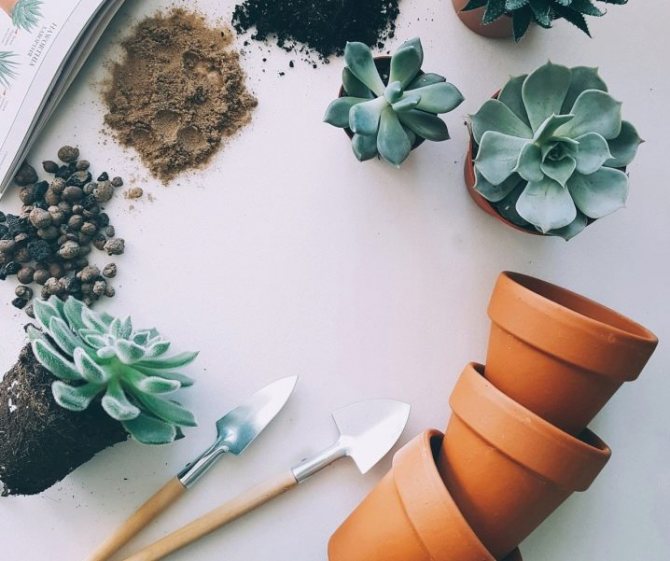

For stability and protection from drying out, pebbles are placed on the surface. The distribution of the soil should be such that there is little room on top for water and it does not overflow when watering.
Soil requirements for cactus
As already noted, the soil for cacti should be slightly acidic. If the soil is not suitable for this indicator, you can acidify it by adding a little peat or reduce the acidity with lime, it will give the desired alkaline reaction.
In addition, the following nuances should be considered:
- Young specimens and dive seedlings require looser and more nutritious soil, so leafy soil is its main component.
- Adults and old succulents need a denser soil mixture, more greenhouse or clay-sod soil is added to it.
- It is recommended to include a little humus in the soil for fast-growing succulents, for example, prickly pears, pachycereus, cereus.
- Cacti that have thorns require calcium-rich soil, and crushed eggshells can be added to it. Thornless succulents also need this element, but in smaller quantities.
- Desert cacti are suitable for a mixture in which there is little soil and a lot of sand - fine and coarse. The tropical inhabitant benefits from the addition of peat.
Where to place
Be sure to study all the available information about the purchased succulent. In fact, at home for him you need to create conditions as close as possible to natural ones. Most succulents thrive on a windowsill or near a south or southeast facing window. Of course, on especially hot days, closer to noon, you need to create a shade for them. The most unpretentious are green succulents. Colored (yellow, red) requires strict adherence to temperature and light conditions. Failure to comply threatens the loss of such a rare color. The windowsill or any other surface should be wide enough.
It is good if there is constantly humid air in the room. Humidifiers or installation next to water - an aquarium, a kitchen sink, can help with this. But it is not recommended to spray the trunk - ugly spots may appear. During the summer, most succulents can be kept on a glassed-in balcony or veranda. A slight cold snap at night will only harden the plant. The main thing is that there are no drafts in this place. Ventilation should be constant as air exchange is very important, but the air supply should not be directed directly at the plant.
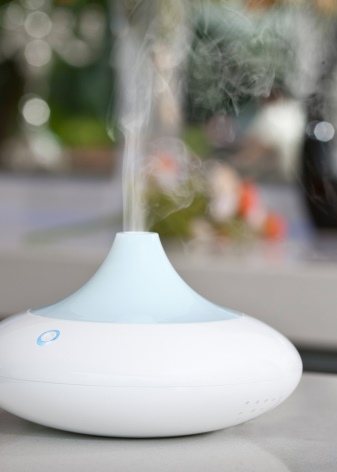

All plants of this species are sensitive to movement. This applies not only to rearrangement from one place in the room to another. Even during cleaning and watering, you should not move the pot or twist it around its axis. In exceptional cases, it is necessary to note which side to the light it was located and return it to exactly the same position.
Characterization and use of the hydrogel
More recently, a hydrogel has appeared in floriculture shops. This product immediately attracted the attention of buyers due to its amazing appearance. The product can be sold as granules, powder or crystals. It is capable of absorbing and retaining moisture. When wet, the elements increase significantly in size.Manufacturers have added safe dyes to their composition, thanks to which the granules are full of a variety of colors.
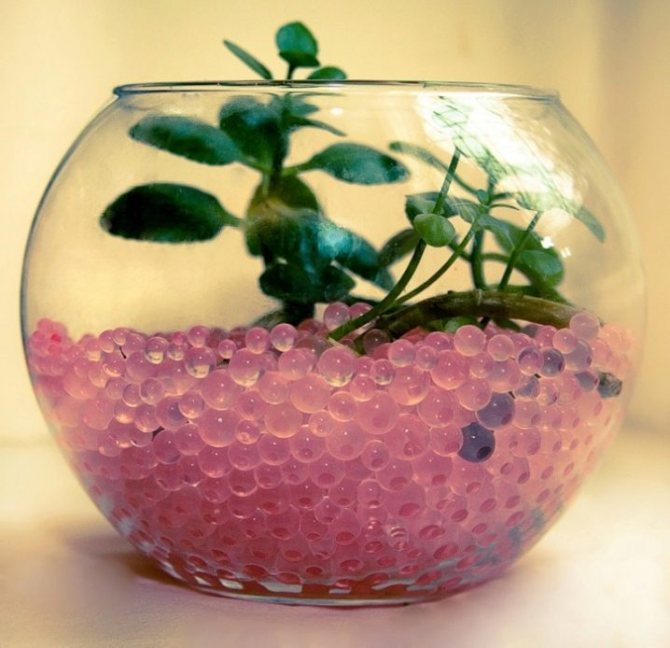

The larger hydrogel is used as a substitute for substrates and primers for indoor plants. Plants are planted in transparent containers, creating amazing living arrangements. The fine product is mixed with earth. This composition is often used for seed germination.
Often the product acts as a decorative addition to the interior. By mixing several bright colors in one transparent container, you can add color and expressiveness to the decor. Such an element will become an accent and complement the style.
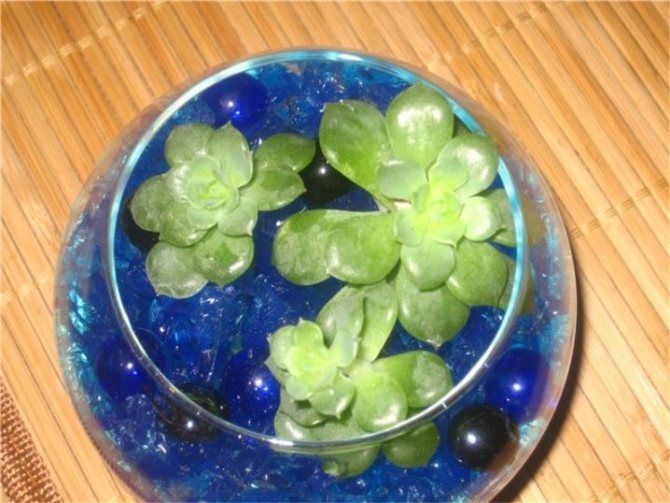

Watering rules
- Water the plant only after the soil in the pot has become completely dry. You can check this with a stick, with which the soil is pierced from the edge, along the entire depth. If the stick is wet, we postpone watering.
- In the warm season, the frequency of watering should not exceed 1-2 times a week.
- In winter, soil moisture should be reduced to twice a month.
- It is especially necessary to carefully monitor the humidity in containers that do not have holes for water drainage and ventilation. To emphasize the unusual beauty of succulents, they are often planted in glass aquariums, glasses, bowls, beautiful jars. In this case, you should experimentally calculate how much water is required for moistening (starting with 5-10 ml and gradually adding).
- For irrigation, you need clean, not tap water without impurities. If you are filtering water or buying in bottles, boil it additionally and cool it down. You cannot use cold water for this purpose.
- The water should flow directly onto the soil without splashing, so it is best to choose a watering can or other utensil with a spout.
- Fertilizers designed specifically for succulents can be added to the water for irrigation. They can be used on weakened plants or in winter.
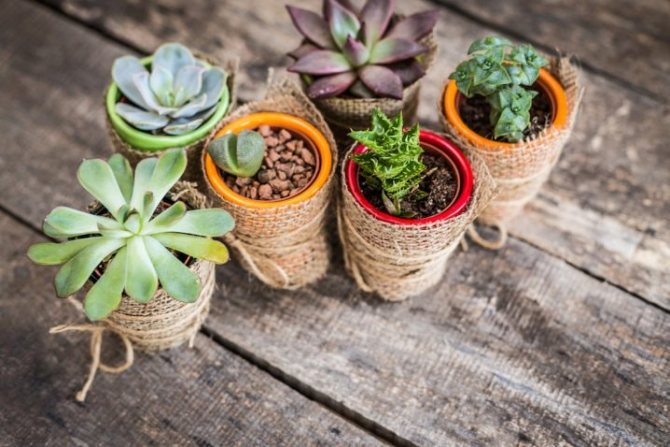

How to transplant succulents, see the next video.
| 1. | After compaction of the earth, it turned out that the plant was planted deeply. | You can gently pull the plant up by shaking or tapping the pot |
| 2. | Not all roots are covered with earth, and it is no longer possible to add it. | It is necessary to remove the plant and start the planting process again. |
| 3. | The plant is planted asymmetrically. | By tapping on the pot, you can try to correct the angle of the plant. This should be done without the use of force. If it did not work out, then the landing will have to be repeated. |
| 4. | Forgot to put a drain on the bottom. | Landing will have to be repeated |
Planting room culture rules
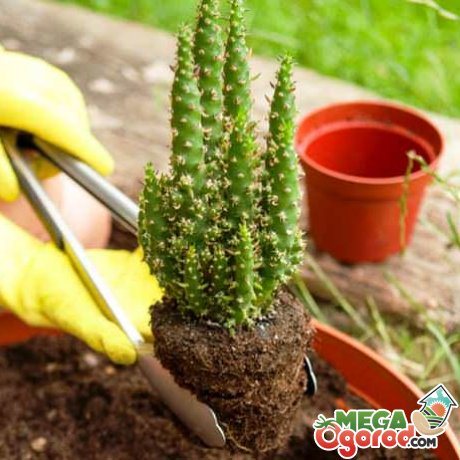

It is better to plant or transplant a cactus in April or May. A layer of drainage is placed in the container, and then a little prepared soil.
It is advisable to disinfect the soil mixture before planting.
You can spill the ground with boiling water two weeks before planting the plant. Steaming in the oven is also not excluded by placing the container for an hour in a slightly heated cabinet. A microwave oven is also used for this purpose. In any case, the procedure is carried out in advance so that the earth has time to be saturated with beneficial organisms.
The roots of the cactus are straightened, dipped in a pot and sprinkled with soil. After it is lightly tamped and poured, add earth and a drainage layer on top. Cacti are transplanted twice a year, picking up a new pot and substrate.
Small pots
Large pots are not suitable for succulents (and most other plants, too) because the soil in them dries out for too long between waterings, which is harmful for succulents, especially in winter. Small plastic or clay pots (including Eco-people), small seedling cups, and even just 50 and 100 ml plastic cups (for small specimens) are suitable.
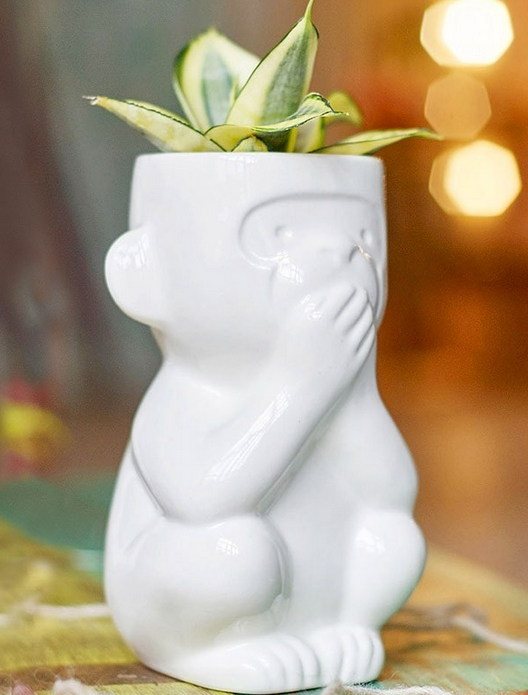

Advantages and disadvantages
The absence of chemical impurities is the main advantage of coconut peat, its composition is a pure organic product. Florists who use it get a number of benefits:
- Chips like a sponge absorb moisture and retain it for a long time.
- There is no moisture on the surface of the coconut fiber, so there is no favorable environment for the growth of fungi.
- Coco soil has the most acceptable pH level for most indoor plants (5.7-6.5).
- In the tissues of coconut fiber there are micro and macro elements necessary for plants (potassium, phosphorus), it is able to accumulate them.
- The long decomposition period of the organic fiber guarantees its long-term use for 5 years.
- The fiber provides the roots with the necessary aeration and drainage.
- Cocoa soil is odorless, which increases the comfort of its use.
- The fiber is pleasant to the touch and can be easily mixed with soil to obtain a uniform consistency.
- The content of cellulose and ligin in the shavings promotes the multiplication of beneficial bacteria (trichoderm).
- There are no harmful microorganisms, adults, larvae and eggs of pests.
Do not gloss over the shortcomings. On the market, you can find a low-quality product from an unscrupulous manufacturer who uses sea water for shell processing.
Features of growing by seeds
Large containers are used to sow large quantities of seeds. These can be plastic boxes or pots. But it is worth remembering that succulents are periodically transplanted, so you should keep the earthen lump along with the plant. The planted seeds are covered with a plastic container or greenhouses are made in advance. Cut bottles can also be used. For planting, use a mixture of a universal peat substrate with perlite and coarse sand in equal proportions. The mixtures are chosen in the correct ratio, otherwise the seeds can rot.
First, the material is soaked and placed in a cloth, germination is carried out. After the seed is placed in the soil, where it will germinate.
Planting temperature should be high. Therefore, the procedure is carried out at a temperature of 25-30 degrees. They choose the spring time of the year. Since the sprouts will get stronger in summer and gain strength, this is the best season for their rapid and active growth. Illumination is controlled, the southern part of the house is chosen for planting. If natural lighting is not enough, artificial lighting is used. The transplant is carried out when the first full-fledged leaves appear on the cactus or aloe. For a long time, plants are not left in a common container, because they quickly take root. Not all plants survive after transplantation. In good weather, succulents can be taken outdoors. This will have a positive effect on the condition of the seedling and allow it to grow stronger.
See also
Rules for the care and cultivation of Wanda orchids at home
Features of self-cooking
It is quite simple to make soil with your own hands, you just need to know what the main elements are in the mixture for these plants. The only difficulty may be finding all the ingredients, since not every grower is ready to go to specialty stores for them. However, there is nothing difficult here either, because as follows from our previous paragraph, some components can be an excellent alternative if you could not find the required ingredients.
It is also worth paying attention to one nuance: the constituent parts of the substrate will change slightly if you plant different varieties of plants. So, here are the basic recipes for potting soil.
For desert cacti
For these plants, it is necessary to compose a substrate, taking the following components in equal proportions:
- turf and leafy land;
- peat;
- coarse sand.
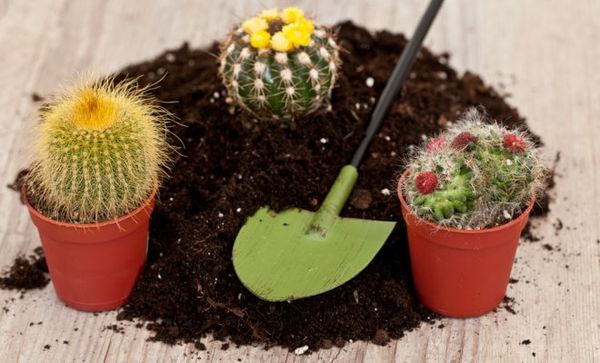

For plain cacti
When formulating potting mix for lowland varieties, it is important to consider that they need looser soil than their predecessors. This is the reason for the changes in the composition of the soil mixture:
- turf and leafy land;
- peat;
- humus;
- coarse river sand.
Sod land will need a little more than the rest of the components - two parts. All other ingredients are needed one part at a time.
Families Cereus
These plants are distinguished by fast growth rates and rather large sizes. Because of this, the soil in which they are planted should be more fertile. So, the following elements are included in the substrate for plants of the Cereus family:
- turf and leafy land;
- peat;
- humus.
All ingredients, except for humus, are taken in equal proportions. Humus makes up 1/4 of it, since even such a small amount is more than enough to ensure the required level of fertility.
Soil for unpretentious cacti
These species have the simplest soil composition. It should be noted that humus is not added there at all, since they are not particularly selective in choosing a substrate. So, to prepare a potting mix for unpretentious varieties, you will need the following components:
- ready-made soil;
- coarse sand;
- gravel.
It is necessary to observe the ratio of 2: 2: 1, and then the substrate will turn out to be good and nutritious.
Difficulties in leaving
- "Living stones" are those succulents that prefer to grow in families of three flowers or more. One plant usually does not survive.
- If the plant has shrunk, this is a sure sign that it needs to be watered, but water sparingly and it is better around it, it is better not to pour water directly on it.
- If it has small dents, it means that it has been poured, it is necessary to reduce watering.
- Due to the fact that "live stones" are watered, the appearance of a mealybug is very rare. This is a pest that appears in arid land. How, then, to care for the plant? For prevention, you need to mix a decoction of garlic with pieces of soap, and pour the plant with this solution.
- In low light, the succulent is stretched out. Sometimes in the summer a new pair of leaves grows, but the old one does not dry out. In this case, the flower grows in height and weakens. This will not happen if you keep the succulent in direct sunlight. Due to low light, it may also not bloom.
"Living stones" are very unpretentious plants and with proper care they will delight you for many years.
Succulents are plants that prefer bright sun, they grow in places with a shortage of water and therefore store it in their succulent leaves or stems. They have special growing requirements. If you understand how to grow them, new horizons will open up for you. Because these are not only cacti, it's much more
.
Succulent cuttings can also be purchased on the Internet today (this also allows you to get rare varieties that you cannot find in your gardening centers). In the fall, cuttings are usually sent to enough sluggish
condition, the way it should be: they are overwintering, and sluggish succulents are less susceptible to damage from low temperatures during shipment.
Soil for cacti - what it is
Cacti growing in the desert, as well as those with turnip roots, grow in clay-lumpy soil. As for forest species with fibrous roots, loose earth would be an ideal option for them. Generally speaking, both some and other species need a moisture- and air-permeable substrate, with a Ph level that does not exceed 6.5.
It is very important to ensure that fertilizers are not included in the composition of the soil, since this plant does not need various fertilizers intended for rapid growth or build-up of green mass. They also do not need minerals and nitrogen-containing fertilizers.
Each flower needs its own soil
She is chosen according to the following principle:
- Those species that are prone to decay (blossfeldia, ariocarpus, strombocactus and the like) are grown exclusively in waterproof soil, where stones are present in large quantities.
- Specimens with thorns are demanding on some components, especially they lack calcium. Therefore, this element must be present in the soil.To do this, it is enough to take the eggshell, grind it to the very minimum and add it in small quantities to the soil mixture.
- Some types of cacti, one of these is astrophytum, as well as similar specimens with long thorns, need lime, which must be added to the soil from time to time.
Important! If lime or calcium is added to the substrate of those types of cacti that do not need these elements, then the plant may begin to die.
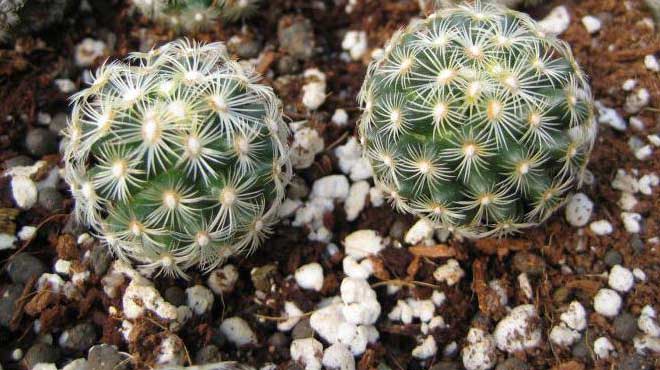

As for the substrate, some gardeners do not know how to achieve additional looseness, as well as breathability. And for these purposes it is necessary to use coarse sand. Suitable for both construction and river. In addition, you can use vermiculite, expanded clay, crushed stone, small pebbles and brick chips (pre-well sifted and washed).
All these components, except for sand, must be selected based on the size of the cactus, as well as its age. If the mixture is made for a young cactus, then it is best to pay attention to the small fraction, if for an adult, then to the large one.
Important! In the case when the land for cacti is compiled with his own hand, all components must be sterilized.
Required components
So, the soil for cacti consists of the following basic elements:
- Leafy land. Used as a basic element, very loose and great for these babies.
- Clay-soddy soil. Used to retain water. In addition, nutrients are washed out of it much more slowly.
- Old greenhouse soil. This is a fallback if the previous two are not available to you for some reason.
- Humus. Use it very carefully, in scanty amounts. It is allowed to be added only to very nutrient-poor soil.
- River sand. It is used for loosening and is included in all basic soil mixtures for these plants.
- Fired clay. Also used for loosening.
- Charcoal. It is added to the substrate in small pieces. Interferes with putrefactive processes.
- Brick chips. Can be used to increase the level of looseness of the substrate.
- Peat. Used to increase acidity levels if needed.
- Lime. Only used if it is necessary to lower the acidity level.
Botanical features of the flower group
Succulents are representatives of different flower groups, as a result of which it becomes difficult to distinguish their botanical features. They have pronounced common features:
- Drought resistance.
The peculiarity lies in the ability to accumulate moisture in the fleshy stems and leaves. In case of urgent need, moisture begins to be consumed for its intended purpose. - They react negatively to excessive moisture.
Hot countries are considered the homeland of such plants, and excessive moisture can adversely affect them. - Cuticle.
A unique waxy bloom that gives the leaves a bluish tint. Plaque serves as protection from the scorching sun rays and from uneven fluid flow. - Dying off of a part of the stem.
In cases where the drought becomes prolonged, then part of the stems above the ground dies off. Full recovery occurs after the water supply resumes. - Ribbed bar.
Ribs located on the stem and elastic leaves prevent the plant from bursting as a result of water accumulation.
Aspect 1. Group of succulents and their distinctive features
Today, numerous varieties are known that have beautiful and memorable names:
| Photo | Description |
| Type 1. Agave It is a leaf-type succulent. Has a decorative look. The plant is formed by numerous leaves with a white border. The leaves are arranged in a circle. | |
| View 2. Lithops Outstanding representatives of rockeries. The second name is living stones. In their appearance, they are similar to small stones - boulders. Flowering occurs in mid-summer, chamomile-shaped inflorescences of yellow shades. | |
| View 3. Aeonium tree-like Low shrub, rosette-shaped leaves. Leaves can have different shades: from red-violet to light green. | |
| View 4. Echeveria agave It is a miniature plant with many fleshy leaves. In the middle of summer, a high arrow forms, on which fiery buds are formed. The foliage is usually reddish brown. | |
| View 5. Crassula The second and better known name is the money tree. Differs in unpretentiousness and glossy foliage. Decorative shaping can be performed. The tree will grow up to one and a half meters and has bizarre shapes. | |
| View 6. Stapelia The incredible bloom makes this species very beautiful. Perfect for the formation of decorative flower beds, rockeries and home florariums. |
All succulents grow and develop equally well at home and in the garden. For them, it is necessary to select sunny territories, ensure timely, but rare watering, and also choose dry soils if possible. If the soil is clayey, then the use of a drainage system is a mandatory rule.
Aspect 2. Basic rules of care
Succulent care is quite simple and straightforward. The location in the garden is sunny with dry soil. It is important not to let the ground flood.
Gardeners also recommend using plenty of drainage. For the winter season, only frost-resistant succulent species can be left in the open field. All other varieties are transplanted into a flower pot and carried indoors.
Succulents require moderate or rare watering, otherwise the root will begin to rot
The optimum air temperature is considered to be +25 ° C. Nighttime temperature fluctuations should not fall below +5 ° C.
Aspect 3. Containers for planting
Indoor plants need the right flower pot. If it is selected in accordance with the basic rules, then succulents will be massive, blooming and have a rich shape and shades.
The pot is filled with a little earth. Give preference to loose, dry and, if possible, sandy soil.
Some varieties are capable of growing in fine gravel with little soil. Flower containers can be different, have any volume and size. The main requirement is appearance. Flowers should look attractive.
Aspect 4. Rules for watering and feeding
A fairly common cause of the death of a succulent is improper watering. Note that their root system should in no case be in a wet substrate.
Watering is carried out:
- In the spring - once a week.
- In summer - once every two weeks.
- In winter, watering is limited.
It is allowed to feed the plants only in summer. A low nitrogen fertilizer is applied monthly.
Spring feeding is aimed at restoring water balance, and not at enhancing leaf growth and flower stalks formation.
Aspect 5. Transplant rules
Plants can be transplanted in the spring. Young species are transplanted annually, and adults once every five years.
About a week before the planned date of transplanting the succulent, watering is completely excluded. Please note that all flowering plants will shed their buds, this is normal.
How to properly transplant:
- Dig up a succulent plant.
Remove the plant from the old pot without damaging the root system. Completely free the roots from the soil. - Leave in the air.
The excavated succulent plant remains without soil and water for 48 hours. During this period, the root system dries up and restores strength. - Process
... If, when examining the root, you notice traces of rot or other bacterial lesions, it is important to treat the root system with a manganese solution.
Aspect 6. Methods of reproduction
There are three ways to propagate succulents:
| Photo | Description |
| Method 1. Cuttings The required number of cuttings is separated from the mother plant. Then it is dried in the open air for about two weeks. Planting is carried out in nutritious and dry soil. | |
| Method 2. Leaves Even fallen leaves are well suited for this method. If necessary, the side sheets are cut off and placed directly into the ground.
| |
| Method 3. Seeds The seeds are purchased at the store. Pre-immersed in a weak manganese solution for 24 hours. A flat container with a mixture of coarse sand and steamed clay is used. The seeds are sown, the container is covered with transparent film or glass. Sprouted seedlings should be kept in a warm room - about +35 ° C. A pick is possible in a month and a half. |
Aspect 7. Diseases and pests
With improper care, plants are affected by various pests. Any changes in the appearance of the succulent may indicate the presence of a disease.
Most often, succulent plants encounter clay bacteria. The reason is the excess moisture.
First of all, the root system is affected, and then the aerial part of the bush. Rot can also form in hot or cold climates. When mold forms on the foliage, it is immediately cut off.
Also, plants can infect:
- Ticks.
- Scratch.
- Thrips.
Why do they die with you?
Do not plant succulents in purchased peat-based soil and water often.
The main enemies of succulents are dampness and darkness.
... They cannot grow on shady windows or away from windows and the sun. More precisely, they can, but they will be elongated, weak, frail plants.
Succulents die when they are planted in purchased land for cacti (unfortunately, the soil for cacti in the store is also based on peat, which succulents do not like), watered abundantly, put in the shade, watered regularly in winter when kept on cold windows (forgetting about wintering and decay of roots in damp cold soil). In such conditions, they do not survive.
Soil in natural habitat
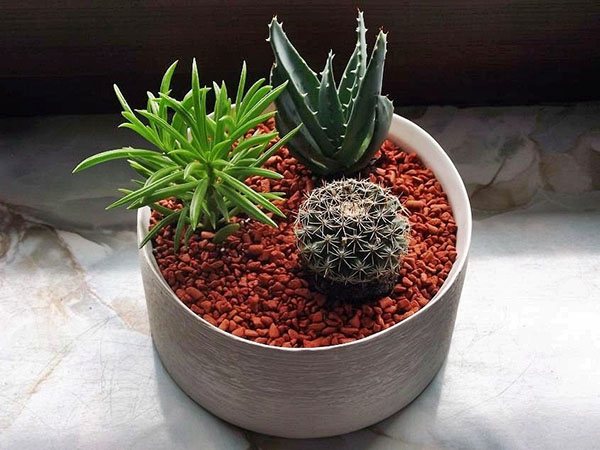

The soil for succulents in the wild is not rich in composition. The homeland of plants is arid places with low rainfall, poor soil, sand, stones, lack of nitrogen in the soil, and its poor composition.
Such conditions of existence in the natural environment led to the fact that succulents have adapted to harsh circumstances. Their roots quickly absorb maximum moisture, and the aboveground part retains it for as long as possible - for weeks.
Taking into account the conditions that are natural for succulents, you cannot use ordinary universal potting mixes to grow them.
Reproduction methods
Seeds
How to grow a plant from seeds at home and what do the latter look like?
The seeds can be bought at the store or asked from friends who already have these plants. They are easily pollinated by hand if there are two separate flowering plants. A brush can transfer pollen from one flower to another. The seeds of "living stones" are very small in size, similar to dust, almost invisible
... This makes them difficult to fit.
How to plant:
Seed germination period is about 2 weeks. Sowing care consists in daily ventilation and strict temperature control. Ventilation is necessary when condensation forms. Fruit ripening and seed ripening lasts about 9 months
... The first year they do not need to be replanted. The next year after molting, they dive into new soil.
Cuttings
Unfortunately, not all "living stones" are propagated by cuttings, because cuttings are the best way to rejuvenate an elderly bushy plant. Thus, lithops does not multiply. Other "living stones" can be easily propagated by cuttings.
To propagate by cuttings, you must carefully cut off the leaf with part of the stem and plant it for rooting in the soil. The first watering is carried out only 3 weeks after planting, during this time roots should grow on the cutting.
Advice
: Some experienced growers recommend leaving the cutting outdoors to dry for 1-2 days. Then the cut is treated with heteroauxin powder or colloidal sulfur.
The plant is rooted in a sandy substrate for a month. A rooted plant usually does not require any special conditions, watering is also normal. The season for breeding is the beginning of spring. In autumn and winter, it is better not to plant, because due to a lack of light and heat, the plant will easily rot in damp soil.
Ingredients
As a base, you can choose a special store-bought mix for cacti and succulents, available in garden shops. Then you can experiment. Try adding additional ingredients to the mix to find the perfect mix that will ease watering and improve drainage.
One of the ingredients of any succulent substrate is organic matter. In most cases, this is peat moss (sphagnum). It is difficult to wet and dries quickly. By adding fine, crushed bark, you can increase the amount of moisture absorbed.
When replanting plants, always replace the substrate with a fresh one.
For indoor plants, coir is an excellent substitute for peat moss. It is a fibrous shredded coconut husk. Unlike peat, it decomposes more slowly. You can also use compost, but it decomposes very quickly.
The other ingredient is an inorganic substance that allows the water to drain quickly, keeping the mixture crumbly and airy. There are some good options that work better than coarse sand or gravel. For example, perlite, crushed granite, pumice or clay. Any such additive dramatically increases the drainage of the soil and increases the period of its destruction, since organic material begins to decompose more slowly.
Why will the soil have to be compiled by ourselves
Peat is an organic mass that is biodegradable by soil fungi, bacteria and blue-green algae. This does not suit succulents at all.
Succulents grow in the desert, and the best soil for them is dry dust, clay, stones and sand
... These are subtracts with a low organic content and no moisture. They do not contain peat or other rich sources of organic matter.
In no case should succulents be planted in purchased peat-based land, even if it is called “Special soil for desert cacti”. That is why, if you want not to ruin the next plant, you yourself will have to work with the soil. In fact, it is not difficult.
Constantly moist organic substrates (peat in a spacious pot and with good watering) are a natural habitat for soil microflora, fungi and bacteria.
Succulents in places of their natural growth do not encounter the presence of soil microflora in the substrate and therefore have absolutely no immunity to it
... Their roots in your home die from common soil microorganisms that are harmless to other plants.
To grow succulents, you need soil that dries very quickly
.
Peat and soils based on it dry out for a very long time due to the high water-holding capacity of peat. If such a soil is dry, it is extremely difficult to wet it back: water simply flows down the walls of the pot, without reaching the roots. Such soil must be watered regularly, without overdrying. And for succulents, regular drying of an earthen coma is the main measure for the prevention of decay.
Ordinary outdoor forest or garden land mixed with coarse sand is best suited for succulents.
Coarse sand is sold in the pet / aquarium supplies section. It is not necessary to ignite or steam the earth and sand.
It is also not necessary to spill the earth with potassium permanganate, because potassium permanganate is a strong oxidizing agent that degrades the chemical properties of the soil.
They are not afraid of temperature changes
Succulents can easily tolerate temperature fluctuations in a range much wider than it is in living quarters. There is only one thing to keep in mind: most of the home-grown succulent species. do not withstand frost.
They are not afraid of the summer heat, even the most severe, if you open the vents. If you need to leave and the vents will be closed, and according to forecasts there is a great heat ahead, it is better to remove the plants from the direct sun so that they do not "cook".
Succulents accumulate liquid in their leaves, as a result of this, they can safely do without watering for quite a long time. The plant has enough diffused light and a comfortable flower pot. What else do you need to know when growing such a crop? I'll tell you about this.

